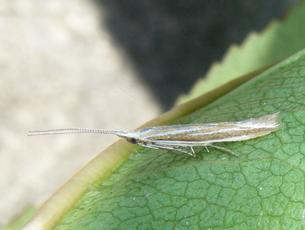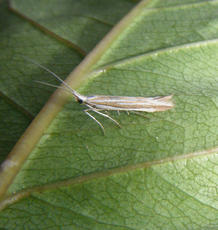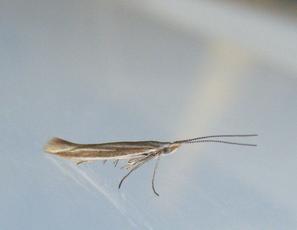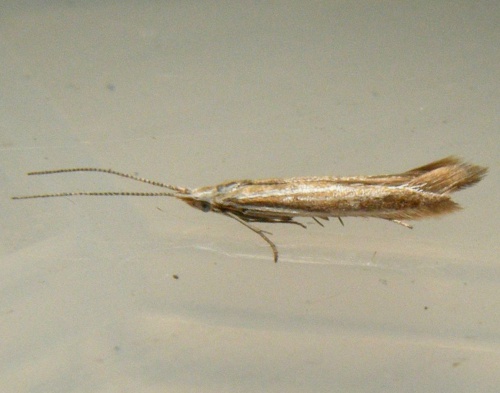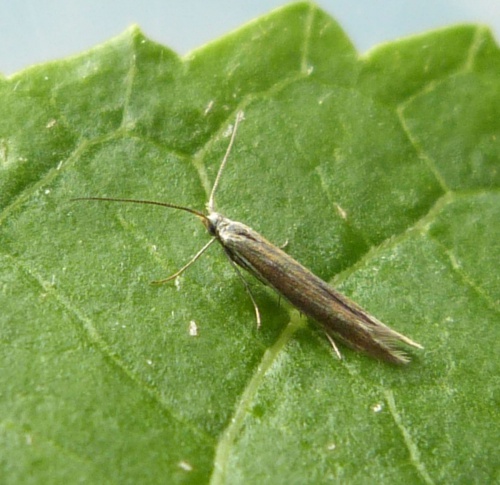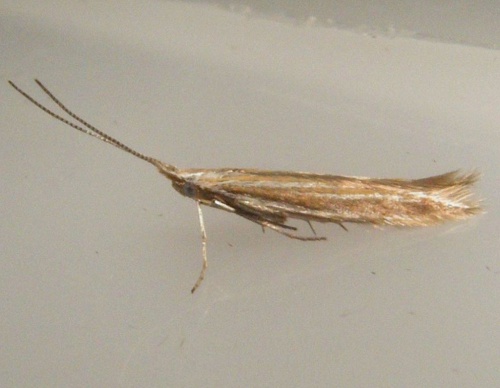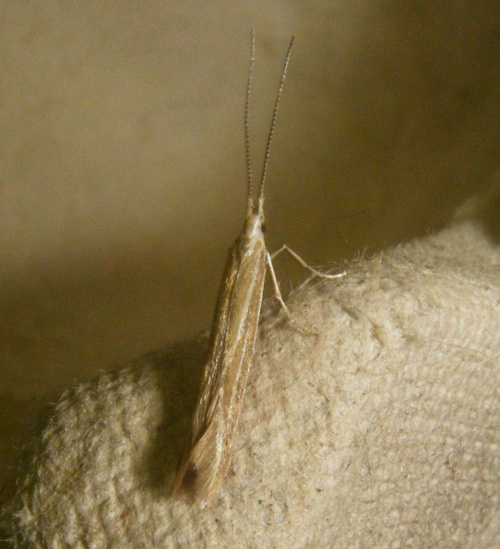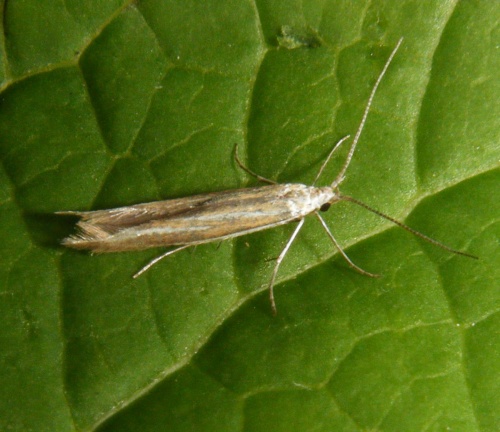Coleophora albicosta
Wingspan about 14 mm. The scientific name of this species is derived from the whitish streak along the costa, or forewing edge.
Around the larval foodplant Gorse.
Flying by day, but also sometimes coming to light at night, the adults are on the wing from May to July.
The larva feeds on Gorse. At first, it feeds on green seeds inside a seedpod. From July to November, it lives in a detached sepal rolled into a case, which it attaches to the side of a seedpod and bores in to feed on the seeds. From November to April, it diapauses full-fed in a silk case in a dead flower. In April it pupates in the overwintering case.
The species is fairly frequent throughout the British Isles. In the Butterfly Conservation’s Microlepidoptera Report 2011 this species was classified as common.
It appears to be uncommon in Leicestershire and Rutland, where there are few records. L&R Moth Group status = D (rare or rarely recorded).
Leicestershire & Rutland Map
Enter a town or village to see local records
MAP KEY:
Yellow squares = NBN records (all known data)
Coloured circles = NatureSpot records: 2020+ | 2015-2019 | pre-2015
UK Map
Species profile
- Common names
- Gorse Case-bearer
- Species group:
- Moths
- Kingdom:
- Animalia
- Order:
- Lepidoptera
- Family:
- Coleophoridae
- Records on NatureSpot:
- 12
- First record:
- 06/06/2006 (Skevington, Mark)
- Last record:
- 10/06/2023 (Cranston, Elspeth)
Total records by month
% of records within its species group
10km squares with records
The latest images and records displayed below include those awaiting verification checks so we cannot guarantee that every identification is correct. Once accepted, the record displays a green tick.
In the Latest Records section, click on the header to sort A-Z, and again to sort Z-A. Use the header boxes to filter the list.


